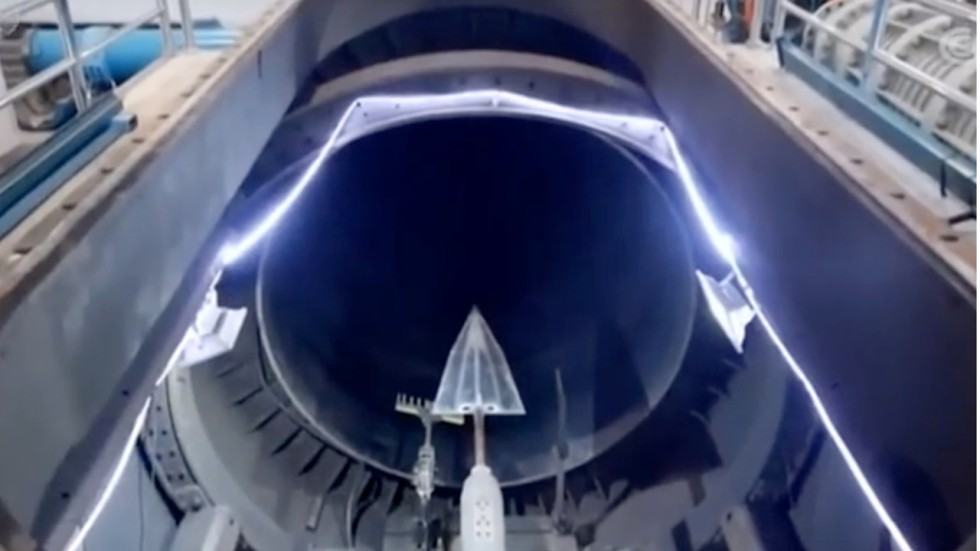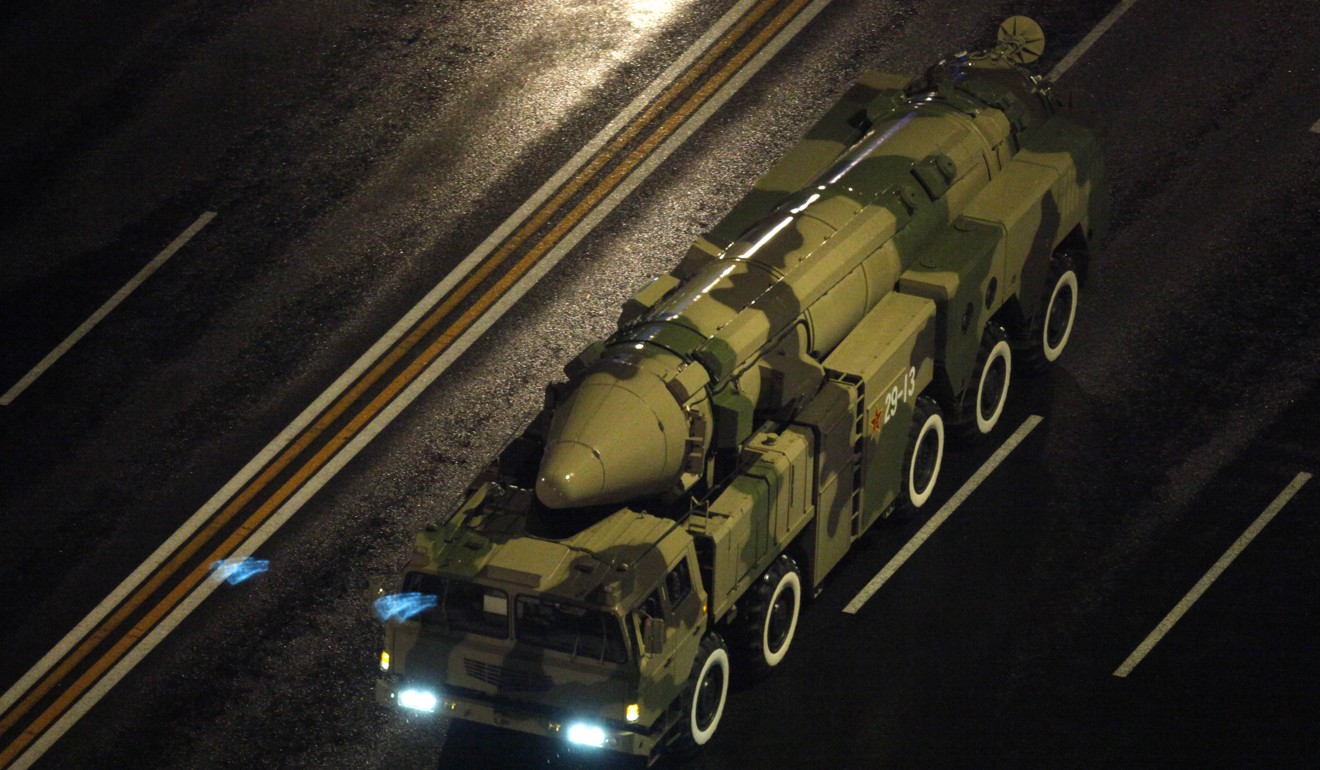Minnie Chan
 China’s new “hypersonic” ballistic missiles will not only challenge the defences of the United States but also be able to more accurately hit military targets in Japan and India, according to Chinese military specialists. The assessment comes after Tokyo-based The Diplomat magazine reported that China’s rocket forces conducted two tests late last year of a new “hypersonic glide vehicle”, or HGV, known as the DF-17, citing US intelligence sources. HGVs are unmanned, rocket-launched, manoeuvrable aircraft that glide and “skip” through the earth’s atmosphere at incredibly fast speeds. Compared to conventional ballistic systems, HGV warheads can travel at much higher speeds, lower altitudes and less-trackable trajectories. The approach leaves defence systems less time to intercept the warhead before it drops its payload.
China’s new “hypersonic” ballistic missiles will not only challenge the defences of the United States but also be able to more accurately hit military targets in Japan and India, according to Chinese military specialists. The assessment comes after Tokyo-based The Diplomat magazine reported that China’s rocket forces conducted two tests late last year of a new “hypersonic glide vehicle”, or HGV, known as the DF-17, citing US intelligence sources. HGVs are unmanned, rocket-launched, manoeuvrable aircraft that glide and “skip” through the earth’s atmosphere at incredibly fast speeds. Compared to conventional ballistic systems, HGV warheads can travel at much higher speeds, lower altitudes and less-trackable trajectories. The approach leaves defence systems less time to intercept the warhead before it drops its payload.
The People’s Liberation Army (PLA) Rocket Force carried out the first test on November 1 and the second one two weeks later, the report said.
Both tests were successful and the DF-17 could be operational by around 2020, the US intelligence sources were quoted as saying.
Chinese military specialists said the DF-17 was one of several iterations of glider systems developed by the PLA, including the DF-ZF which has been through at least seven tests.
Song Zhongping, a former member of the PLA’s Second Artillery Corps, the rocket wing’s predecessor, said the DF-17 was the weaponised model of the DF-ZF prototype.

Song, a military commentator for Hong Kong’s Phoenix Television, said the HGV system could be used with various kinds of ballistic missiles, including intercontinental ballistic missiles with a range of at least 5,500km.
He also said multiple HGV warheads could be used with the DF-41, which has a range of at least 12,000km and can hit anywhere in the US in less than an hour.
Macau-based military observer Antony Wong Dong said HGVs could also be used to target and destroy a US anti-missile system known as THAAD, or Terminal High Altitude Area Defence.
South Korea installed the THAAD anti-missile system last year to ward off dangers from North Korea’s nuclear programme but China also sees THAAD as a threat to its own defences.
“China’s HGVs ... could destroy the THAAD radar system if there is war between the two countries,” Wong said.
“Once the THAAD radars fail to function in the first stage, it could reduce the window to raise the alarm about the PLA’s [ICBMs] ... leaving the US without enough time to intercept.”
The DF-17 test missiles were launched from the Jiuquan launch centre in Inner Mongolia and flew about 1,400km during the trial, The Diplomat reported.
Chinese state media first reported on the country’s HGV technology in October, with footage of the system in a hypersonic wind tunnel in various arrays.
Beijing-based military analyst Zhou Chenming said HGV technology had become part of the nuclear strategy between the world’s three big nuclear powers: China, the US and Russia.
“Compared to conventional ballistic missiles, HGVs are more complex and difficult to intercept,” Zhou said.
“The US, Japan and India should be worried about China’s developments in HGV technology because it can reach targets quicker and more accurately, with military bases in Japan and even nuclear reactors in India being targeted.”
Song and Zhou said the US and Russia were also developing hypersonic glider technology, but the US trailed China and Russia in some areas because it had focused on more advanced hypersonic aircraft and put HGV development on hold for years.
This article appeared in the South China Morning Post print edition as: china’s new missile will challenge U.S. defence
No comments:
Post a Comment